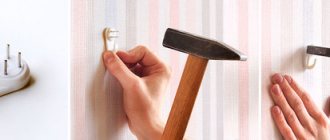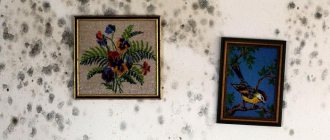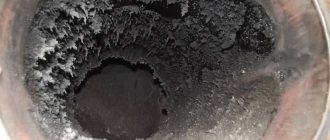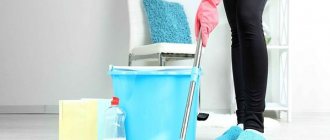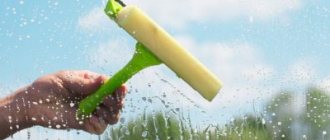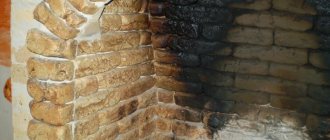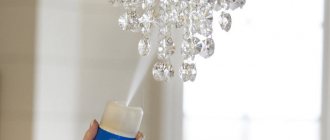Decorative plasters do not lose popularity - they easily displace wallpaper, which once seemed irreplaceable, from the market. But more and more often the question arises: is it possible to wash decorative plaster - and if so, how to do it? Experts say: almost all types of such coating are perfectly amenable to both simple wet cleaning and cleaning using more aggressive agents.
How to properly wash decorative plaster
Most types of plaster finishing materials can withstand wet cleaning. Therefore, they can be washed with plain water. However, this must be done carefully, following the general rules of care. In addition, you must take into account the type of finish. Some species cannot tolerate even gentle detergents or mechanical stress. That is, they cannot be rubbed too hard or pressed onto the surface with a sponge.
There is also a ban on the use of abrasives, hard brushes and chemical solvents. They destroy the texture and color of the surface.
There is a general algorithm for cleaning actions. To clean plaster, use the following method:
- Wet a small section of the wall with water. You can also use a soap-based solution or slightly diluted laundry detergent, dishwashing detergent, and other compositions permitted in a particular case.
- Wait about 10 seconds.
- Use a clean cloth or regular sponge to remove any remaining cleaning product. Wipe the surface, but do not press on it.
- Allow the material to dry completely and see if the contamination has been completely removed.
- If stains remain, repeat the procedure again.
The most stubborn stains may not respond to wet cleaning. These are usually old stains that have formed over several years. Many people try to clean them with a hard brush and strong chemicals. But this is not recommended, since the likelihood of damage is too high.
Decorative plaster is quite fragile. Due to serious mechanical stress, chips and dents form on it, and the color changes.
To reduce the likelihood of damage during subsequent cleaning, it is recommended to use additional impregnations, fixatives, wax and antiseptics. They increase resistance to moisture and physical impact.
In some cases, instead of water or soap solution, you can use other cleaning products:
- for glass;
- for washing dishes (removing grease);
- for furniture and floors.
However, you need to choose mild formulations, without strong chemicals. If you use such products, then first perform a test on the area where it will be least noticeable.
After wet cleaning, you should always wipe the wall with a clean cloth. This is necessary in order to completely remove contaminants. Otherwise, after drying, they will dry out and may form streaks and yellow spots. At the last stage, it is advisable to wipe the surface dry. This way, the likelihood of divorce will be lower.
Removing greasy yellow stains from kitchen walls
Stains are always easier to remove when they are fresh. But what to do if the stain appeared on the wall a long time ago and is difficult to remove?
Fat yellow stains that constantly appear on the walls and ceiling of the kitchen are annoying and difficult to remove. There is only one method to prevent them from appearing - frequent cleaning of the kitchen. After all, even the best hood is not able to protect walls and ceilings from them. Such stains appear from the slightest drops of fat that settle on surfaces (this could be a kitchen shelf, an indoor flower, a chandelier lampshade, a window sill). Grease also collects on the floor and on countertops, but these are the surfaces that are cleaned very often, so it seems that nasty, greasy yellow stains appear only on the walls and ceiling. If you wash the kitchen thoroughly every day, then stains may not appear. Or rather, they will not be so concentrated and harsh, because it is easier to remove them before they have time to “grow up.”
But if they are already there, then you need to wash them! There are several options. 1. Use vinegar. We dilute it with water in equal parts and rub it (or rather, we wet the surface). Each stain should absorb the acid. After which it swells, otherwise the greasy yellow spot becomes loose. In both cases, removing old stains is much easier. 2. Instead of vinegar, you can use lemon juice. The juice is applied to a sponge, after which the stains are generously moistened with it. 3. Use Domestos or chlorine (liquid, such as White or similar). The aggressive environment corrodes the fat, after which the stains become looser. After getting wet, namely after 5-10 minutes, you should wipe the stains with a soft sponge or rag. If grease stains are not completely removed, or they are difficult to remove, you will have to wipe them off with a steel wool. When stains are on the wallpaper (even detergent), you should not use such a hard sponge brush. This also applies to situations with surfaces that are easily damaged or abraded when exposed to abrasives (for example, decorative plaster).
Another option is to wipe them with a dry but soft cloth. In this case, you will have to put in some physical effort to remove the yellow spots, but it will be worth the result. True, you will most likely have to throw away the rag, but the walls will become perfectly clean. If the stains are not greasy and cannot be washed off with a regular detergent, then you should use the following method - use Domestos or a detergent with chlorine. But you should check whether the above products will not harm the surface, because such aggressive substances can cause the paint to fade. Therefore, you can first test the effect of the detergent on an invisible area of the same surface.
What products can and cannot be used to wash decorative plaster?
There are also certain prohibitions on what can be used to wash a decorative element, and what products should be avoided. The finishing material does not tolerate coarse abrasive substances or solvents. They can damage the structure, causing the walls to lose their original appearance. Therefore, before you start cleaning, you should carefully read the instructions for the detergent.
Formulations that contain soda ash will promote the growth of yellow spots (if any). They are not recommended for use in pollution control.
In addition, alcohol or vinegar can also ruin the structure of the material. In cases with brightly painted walls, the color will also fade. For this reason, folk remedies containing alcohol and vinegar should not be used.
To care for plaster, you can purchase a special delicate product, but this is not necessary. A regular soap solution can remove minor stains. Laundry soap effectively and safely removes traces of laundry soap.
If traces of grease appear on the walls (for example, in the kitchen), use a delicate composition to remove it.
However, keep in mind that you should first try the product on a small area of plaster. It is better to choose an inconspicuous place for this.
Preparing the base for finishing
To achieve a smooth surface and eliminate any flaws, you need to properly and completely prepare the base . To do this, before finishing the walls with decorative plaster, certain work is performed:
- Remove old finishing materials (whitewash, drywall, plaster, plastic or wooden panels).
- Eliminate defects in walls, ceilings, and decorative surfaces on which the textured layer will be applied. To seal cracks and potholes, cement mortar and foam are used, and protruding parts are cleaned off with a spatula or other suitable tool.
- Plaster the surfaces with the starting mixture and level.
- Prime the walls to ensure good adhesion to the base. To increase efficiency, apply two layers of primer.
In order for the plaster finish to look as intended, you will have to accurately level the surfaces with control vertically and horizontally by carefully smoothing out the smallest irregularities.
Features of care
To make the material last longer, it is best to clean decorative plaster periodically. It needs to be looked after regularly. This will help prevent dirt from accumulating and causing stubborn stains. Fresh stains must be removed immediately to preserve the finish.
During cleaning, you can simply carry out wet cleaning. The walls are wiped with a wet cloth or sponge soaked in a soap-based solution, and if necessary, a cleaning agent is used. Apply them with a cloth or using a spray bottle, then wipe dry.
For additional protection of the coating, natural or artificial wax is often used. It makes the wall more moisture resistant.
However, when caring, you need to take into account the type of finishing material. Most tolerate wet cleaning well. But the cleaning features will also depend on the type of plaster mixture.
Thin-layer decorative plaster
This type of finishing material includes coatings that imitate fabrics. It could be:
- velvet;
- silk;
- corduroy, etc.
This plaster requires delicate cleaning. Do not use aggressive chemical components or abrasive substances in care. To deal with dirt, use a regular soft sponge or cotton cloth. Prepare plain water as a cleaning composition. When there is a lot of dirt and it is pronounced, use a weak solution based on laundry soap.
When treating the surface, you should not put too much pressure on the walls, otherwise there is a risk of damaging the texture. The finish is treated with gentle movements with a sponge or napkin soaked in water.
Textured
This is one of the most resistant types of plaster mixture. If the walls are heavily soiled, they can be cleaned with little effort - this will not affect the appearance of the finish. In addition, textured plaster is most often additionally treated with wax or varnish. The additional layer effectively protects the surface from moisture and dirt. In the future, this will save the owner time and effort spent on maintaining the walls.
During cleaning, the finishing material can be cleaned not only with soft sponges or napkins. For these purposes, you can use stiffer brushes that remove dirt more effectively. However, do not confuse them with abrasive agents - not a single plaster can withstand their use.
Water and a solution of laundry soap are used as cleaning compounds. To remove grease stains, use a diluted dishwashing detergent. In small quantities, you can add mild washing powder and glass cleaning compounds.
At the end of cleaning, treat the walls with wax or varnish, which will create a finishing layer on the coating. Waterproof material should definitely be used if the plaster is applied in the bathroom or kitchen.
Plaster with quartz filler
Another mixture with a high degree of resistance to impact is with quartz grain. It also has increased vapor permeability, and also allows you to create different patterns on the wall.
This type of finishing material is quite unpretentious in care. Although dust quickly accumulates in the textured surface, it can be removed with a vacuum cleaner.
To deal with stubborn stains, use water or soapy water. They are applied to a sponge or cloth, after which the resulting stains are cleaned.
To remove the most stubborn stains, you can use a brush with soft bristles.
Venetian
It is not advisable to wash Venetian plaster. And in the first weeks after applying it to the walls, it is completely prohibited. The basis of the material is marble flour. Synthetic fillers are used as a binder component - silicone, acrylic or silicate.
The surface of the finished walls resembles real marble. After drying, the plaster will be, although not as strong as rock, but at the same time quite resistant to physical impact.
However, in the first month after repairs, the walls must be protected from water. The surface must not be cleaned during this time. For greater stability, it is recommended to treat the plaster with wax 1-2 weeks after applying the last plaster layer.
Subsequently, after the mixture has completely dried, wet wipes and sponges are used. To cope with severe stains, use a weak soap-based solution. But chemical compounds and rough abrasives are prohibited, as is the case with other types of plaster.
Painting the walls in the apartment
Good afternoon I'm doing renovations in my apartment. One-room studio 33 sq. meters. I would like to paint most of the walls white or light color. Tell me, what is the best paint to choose so that it is wear-resistant and so that the walls can be washed? Is there a better solution than just painting? Thank you.
Masters online: 450 Orders per week: 1,408 Offers per day: 781
Any interior paint that suits your budget will do. Pay attention to decorative plasters. There are a great many of them. And in principle, there should be no difficulties in applying them after you practice on a couple of square meters of walls. Choose a decorative piece that does not require extensive preparation, which can take up a lot of your time if you don’t have painting skills. Good luck!
Fashionable Venetian mixtures
The most fashionable finishing technology today is Venetian plaster. Even professional builders recognize its undeniable effectiveness and entertainment, noting with regret that working with this equipment is quite labor-intensive and time-consuming.
Venetian plaster walls
To properly apply it to the surface and achieve the expected effect, you need professional skills, and a person who does not often pick up construction tools is unlikely to succeed. When applied to the wall, it creates the complete illusion of marble, and this is understandable, because it contains marble chips. This technology is more than 2 thousand years old, and it has been known since the times of the famous quarries of the Ancient Roman Empire, from where the remaining marble dust was sold in this way.
Relief prints.
The plane can be given a three-dimensional relief of brick or stone masonry, roughly processed wood.
Since applying embossed decorative plaster with your own hands (using stamps) is an easy way, such coatings are especially popular.
For this purpose, special molds (impressions) are produced.
Decoration is done like this:
- Application of the solution. The plaster mass is thrown onto the wall so that a layer of sufficient thickness is created (depending on the depth of the form).
- Imprint. The stamp is heavily moistened with water and pressed against the plastered area.
The pressure is accompanied by light movements (left and right) of insignificant amplitude, tapping with the edge of the palm.
The form is removed and the design is pressed onto the next adjacent fragment.
One print can be used in two versions if rotated at an angle of 180 degrees.
- Coloring. Paint the plaster only after it has completely dried and primed.
For the first, general layer, apply medium-tone paint. Then the relief is emphasized with darker paint placed in deep depressions and recesses.
The protruding parts of the relief “pass” in the lightest tone.
- Protection. Concrete may not be protected. The gypsum is coated with moisture-resistant varnish.
Molds are quite expensive and only pay for themselves when used by construction teams. Therefore, it is easier to make them yourself, using silicone or polypropylene sealant, silicone compound or granular injection molded polypropylene.
It is worth keeping in mind that cement-sand plaster is better suited for outdoor work; gypsum plaster is not as durable. But for plaster reliefs inside, gypsum is more appropriate, since it has less heat capacity (more pleasant, “warmer” to the touch).
Inexperienced workers do not know what layer of decorative plaster can be applied to the wall at a time, so they are afraid to use deep-relief forms. However, such concerns should not apply to reliefs - here the thick layers are not continuous, and their mass does not affect the strength of the coating.
Any mortar finish requires surface preparation: cleaning of old coatings, leveling. The surface must be clean, dry and level.
The most convenient way of application.
The easiest way to apply decorative plaster for beginners is to spray it. The solution is diluted to a “liquid” consistency. The work is carried out with a medium-width spatula, the mass is placed on the falcon.
Having “sprayed” a small section of the wall (approx. 1 sq. m.), the plaster is leveled with a trowel.
It is better not to use wooden graters and graters, since wood is constantly deformed by water. Traces from screws securing the handles of wooden tools are also common.
Is it possible to apply plaster with a compressor?
Many manufacturers provide for applying plaster with a compressor and produce special mixtures. However, you should not dilute the solution, which is not intended to be applied by mechanized means. This makes him very weak.
Is it possible to apply decorative plaster to old plaster?
The choice of the composition of the plaster mixture, the order and scope of work depend on whether decorative plaster can be applied to old plaster.
- What is possible? Apply plasters to more durable substrates. For example, cement coatings can be plastered with gypsum compounds.
- You can apply polymer compounds to any surface.
- You can plaster drywall with “decorative” materials.
- What's not allowed? You can’t throw cement compounds onto plaster – it won’t stick.
- You cannot plaster walls that have not been cleaned (from paint, wallpaper).
- You can't decorate cracks.
The main rule is that you must not violate the manufacturer’s recommendations. If the instructions are not suitable, it is better to choose another mixture.
Sources:
https://cat-kitchen.ru/steny/mozhno-li-ispol-zovat-dekorativnuyu-shtukaturku-dlya-otdelki-kuhni/ https://mschistota.ru/cleaning/myt-dekorativnuyu-shtukaturku.html https:/ /freelancehack.ru/other/kakimi-sredstvami-nelzja-myt-dekorativnuju-shtukaturku https://luxury-house.org/moyushhayasya-dekorativnaya-shtukaturka-dlya-kuhni/ https://bv73.ru/rabota-s- dekorativnoj-shtukaturkoj/
General information
So, we figured out what dry plastering is. Naturally, it contains gypsum, which accounts for 93 percent of the total material. There is cardboard or paper on both sides of the gypsum layer, so the material does not crumble or crumble. In addition, dry gypsum plaster includes starch and organic substances, which improves its properties.
The main advantage of drywall is its versatility, as it is perfectly suited for subsequent finishing with a variety of coatings. Most often, decorative plaster, wallpaper, tiles, etc. are used for these purposes. .
Finishing moisture-resistant drywall with tiles
In addition, dry plaster has other advantages, among which are:
- The material is environmentally friendly, as it does not contain harmful substances, including the release of toxic elements during combustion.
- Flame resistant.
- Excellent sound insulation qualities, since the gypsum layer has an increased density, due to which it dampens sound waves.
- Wall finishing is much faster and easier than with traditional plastering.
- Low cost of finishing, especially considering that with traditional plastering with high-quality mixtures, the consumption of dry plaster per 1 m2 is 8-10 kg with a coating thickness of about 10 mm.
Advice! An excellent finishing option is decorative bark beetle plaster, which can look harmonious in almost any interior.
Of course, this option for wall decoration also has some disadvantages:
- The material is not strong enough, as a result of which furniture and household appliances cannot be attached to dry plaster.
- Even moisture-resistant panels will not be able to withstand exposure to water. Therefore, in the event of flooding from above, the apartment will have to be renovated.
Alignment
- Before leveling plastering, it is necessary to take measurements using a level and tape measure. Then mark the surface in accordance with the deviations from the plane for installing beacons.
- Next, you need to determine the thickness of the plaster layer in places of minimum and maximum deviations, and then calculate the average value and the required amount of material.
- Installation of beacons. The solution must be applied to the surface along the vertical marking line and the beacons must be attached to it - the profile must be sunk into the solution, controlling the process with a building level.
- After the beacons are installed, the solution must be thrown onto the surface between the installed profiles and stretched according to the rule. The thickness of the layer of leveling material is indicated by the manufacturer on the packaging. The plaster should be applied in several stages after the previous layer has set.
- After the leveling layer has hardened, it is recommended to prime the surface.
Photo: decorative plaster
To work with plaster mixtures you will need a basic set:
- Master OK;
- putty knife;
- ironer;
- graters
To create a relief surface or an original design, specialized tools may also be required: structural rollers, stencils with ornaments or stamps. You can replace them with improvised means - cellophane, a sponge or a brush, then the pattern will turn out to be unique, and the process will be creative.
What it is
From the very beginning, it should be noted that wet plaster and liquid wallpaper, although similar in appearance, in fact, their compositions are somewhat different. This difference mainly concerns the appearance of the coating - liquid wallpaper has a more pronounced structure and pattern, while wet plaster is a more monochromatic material with characteristic silk veins. If we talk about technical characteristics, they are practically the same, as well as the price of the material. If you don’t go into details, then, in principle, these two materials can be put on the same row and no differences can be made between them, and when choosing in a store, the seller always has catalogs with ready-made segments that you can carefully study and choose a wall covering, which will fit perfectly into your interior.
wet plaster is a monochromatic material with characteristic veins of silk
Compound
The composition of the plaster includes three main components:
- Flakes of paper, or to be more precise, cellulose.
- Artificial silk in the form of fibers that create a characteristic pattern and texture on the surface.
- Adhesive based on natural cellulose.
Important! The ratio of components in the old plaster mixture has been adjusted, so it is unlikely that it will be possible to create such a coating at home. The slightest violation in proportion can greatly affect the quality of the coating and its durability.
The ratio of components in the old plaster mixture has been verified, so it is unlikely that it will be possible to create such a coating at home


